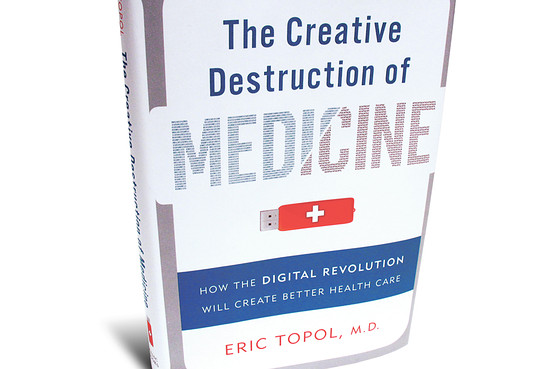
Digital Doctoring
The digital revolution can spur unprecedented advances in the medical sciences, argues Eric Topol in "The Creative Destruction of Medicine."
smaller
By SCOTT GOTTLIEB
Among the most common reasons why people come to an emergency room are bouts of heart failure or pneumonia. Sometimes they have a touch of both. When I was doing my residency 10 years ago, we often struggled to distinguish swiftly one illness from the other. We ended up treating a lot of people for both ailments, until we could sort out later which was the primary culprit.
Over the past decade, the way that doctors approach this common clinical dilemma has been transformed with a simple innovation. A blood test for B-type Natriuretic Peptide (BNP), which is secreted by weakened heart muscle, can help distinguish between the two conditions. Another improvement in recent years: Doctors are replacing their stethoscopes with inexpensive, hand-held ultrasound scanners that can detect a failing heart right in the ER.
Such innovations are just the beginning of a transformation of medicine, says Eric Topol in "The Creative Destruction of Medicine." Dr. Topol, a prominent cardiologist and geneticist, envisions a technology-enhanced future where new tools are integrated into diagnosing and treating patients, transforming the handling of common medical problems.
"The U.S. government has been preoccupied with health care 'reform,' but this refers to improving access and insurance coverage and has little or nothing to do with innovation," even though, as Dr. Topol notes, adopting new approaches would improve care and lower costs. Doctors still "render medicine by the yard," he says, and they follow insurance-mandated treatment guidelines that "are indexed to population rather than an individual."/.../
No comments:
Post a Comment